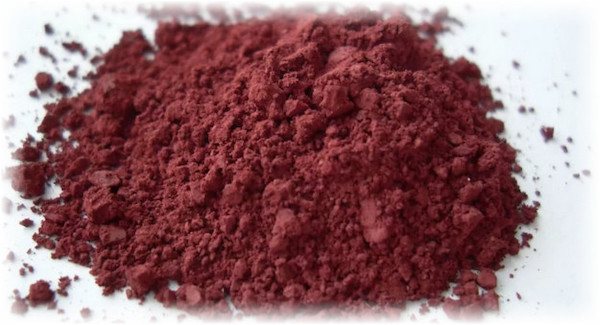Phosphorus is a mineral that combines with other substances in the body to form organic and inorganic phosphate compounds.
Phosphates are vital for energy production, muscle and nervous system function, and bone growth. They play an important role as a buffer, helping to maintain pH.
The body receives phosphorus from food - it is found in many foods and is easily absorbed. Beans, peas, nuts, cereals, dairy products, eggs, beef, chicken and fish are especially rich in phosphorus. Most of the phosphate in the body combines with calcium to help form bones and teeth. Some part is found in muscle and nervous tissues, the rest is distributed throughout the cells of the whole body.
Normally, about 1% of all phosphates in the body are present in the blood. Parathyroid hormone, calcium and vitamin D are involved in the regulation and maintenance of phosphorus levels in the blood. Excess phosphates are filtered by the kidneys and excreted in the urine.
With malnutrition, impaired absorption of food in the intestines (malabsorption), acid-base imbalance, increased calcium levels in the blood and impaired kidney function, phosphate deficiency may occur. Its mild form does not manifest itself clinically, but with severe deficiency, serious disturbances in the functioning of the muscles and nervous system occur. Excess phosphorus is also harmful and can cause symptoms similar to calcium deficiency - muscle spasms, confusion, seizures and other neuromuscular disorders.
Excess phosphorus can develop due to low calcium levels in the blood, various kidney dysfunctions, or increased consumption of phosphorus-rich foods and supplements.
Participation of phosphorus in biological processes of the body
Phosphorus is not only included in living cells in the form of a building material, it also takes part in many vital biological processes occurring in the human body:
- Cell division. Phosphorus is involved in the processes of division of living cells and their growth. It is part of nucleic acids, as well as the structure of cell membranes in the form of phospholipids and phosphoproteins.
- Energy synthesis. Phosphorus takes part in the formation and transport of adenosine triphosphate (ATP) molecules, which store energy in our body.
- Metabolism. Phosphorus takes part in the metabolism and production of carbohydrates and proteins.
- CNS. Phosphorus is involved in biological processes that ensure the transmission of electrical impulses along nerve fibers and brain tissue.
- Balance of phosphorus and calcium. Phosphorus and calcium interact closely in the human body and participate in the formation of the same biological structures. In the human body, with the help of parathyroid hormones, a certain balance is maintained between the content of phosphorus and calcium in tissues and organs. This balance is 2 to 1, two parts calcium to one part phosphorus.
- Other functions. Phosphorus interacts with many enzymes and activates the work of vitamin D and B vitamins.
Where is phosphorus found?
Products containing this useful element are very common and available to every person. It is worth noting that their use should be combined with products containing calcium, since it is phosphorus that helps the latter to be perfectly absorbed in the body, making bones and teeth strong. In this case, all chemical processes will proceed perfectly, in particular, the necessary vitamin D will be synthesized by the body regularly and in sufficient quantities.
Phosphorus content in products per 100 g in descending order:
- walnuts – 564 mg;
- dairy and meat products – 550 mg;
- beans – 541 mg;
- peas – 330 mg;
- chicken and turkey – approximately 380 mg;
- sea fatty fish – 350 mg;
- river fish – 300 mg;
- wheat flour – 270 mg;
- hazelnuts – 230 mg;
- chicken eggs – 215 mg;
- bread – 205 mg;
- rice – 97 mg;
- vegetables – approximately 30-60 mg.
It is advisable to consume these foods in combination with those that contain a lot of calcium . There are also foods in which these elements are already contained together, for example, in cottage cheese with 5% fat content there is 216 mg of phosphorus, and at the same time 150 mg of calcium. For complete absorption of phosphorus, its consumption with calcium should be in a percentage ratio of 1:2, i.e., for example, 100 g of phosphorus and 200 g of calcium.
For an adult healthy person, the daily intake of phosphorus is 800-1500 mg, but it should be taken into account that it is fully absorbed only from fatty sea fish, while from other products it is only 70-80%.
To get the required daily amount of an element from food, an adult must consume, for example:
- 100 g of boiled beans and 150 g of baked turkey meat;
- large steak of baked or grilled salmon or salmon;
- 200 g of cottage cheese with the addition of yogurt and a bunch of greens (optional).
Each person will be able to independently choose their favorite dishes and products, while receiving the necessary amount of phosphorus and calcium in order to feel great and not have health problems.
For certain indications and only on the recommendation of a doctor, in some cases special medications are prescribed, but taking them without a specialist’s prescription is extremely dangerous for health.
Phosphorus in food
The norm of phosphorus per day is 800 mg, the maximum allowable amount of consumption is 1600 mg.
The bioavailability (ability to be absorbed by the body) of phosphorus supplied with food is no more than 70%. Only fish phosphorus is almost completely absorbed in the intestines.
Phosphorus is found in products:
- milk, dairy products (cheeses)
- meat, offal (beef liver), poultry, eggs
- fish, sturgeon caviar
- bread, oatmeal and buckwheat
- walnuts, seeds
- vegetables, greens (pumpkin, parsley, cabbage, spinach, garlic, carrots).
Nuts

85% of the daily requirement for a chemical element is satisfied by 100 g of raw cashews or Brazil nuts. Almonds, pistachios and peanuts contain less of this trace element, but their composition includes other beneficial substances. It is better to eat nuts raw, although roasting improves the taste. Due to the large amount of fat and phytic acid, you can eat no more than 75 g of these products per day.
- Pork knuckle baked in the oven
- Banana cake step by step
- How to get a Veteran of Labor
Lack of phosphorus in the human body
Causes of phosphorus deficiency:
- phosphorus metabolism disorders
- unsatisfactory amount of macronutrient intake into the body (low protein intake)
- excessive levels of magnesium, calcium, barium, aluminum compounds in the body
- excessive consumption of synthetic drinks (carbonated drinks, etc.)
- long-term chronic illnesses
- poisoning, drug addiction, alcoholism
- pathologies of the thyroid gland, parathyroid glands
- kidney disease
- feeding an infant with artificial formula
Symptoms of phosphorus deficiency:
- general weakness, loss of appetite, exhaustion
- muscle and bone pain
- Resistance to infections and colds decreases;
- liver protein synthesis decreases
- dystrophic changes in the myocardium, hemorrhagic rashes on the mucous membranes and skin appear
- in some cases – mental disorders
- rickets, periodontal disease
When there is more phosphorus than calcium in the body, the human body will use the calcium that is stored in the bones.
What are the dangers of excess phosphorus?
An excess of phosphorus is toxic to the body when calcium is actively removed (“washed out”). This is due to sugary drinks, soda, energy drinks and sweets. This is also facilitated by a high-protein diet, so athletes who are actively building muscle mass are often susceptible to excess phosphorus.
The liver and kidneys are affected, stones form in them and their productivity decreases. An excess of phosphorus blocks the absorption of vitamins (especially group B), as a result, this leads to dysfunction of the thyroid and pancreas, and there is also a risk of developing iron deficiency anemia.

Excess phosphorus in the human body
Phosphorus and phosphates are non-toxic. The lethal dose for humans is considered to be 60 mg of phosphorus. A number of phosphorus compounds (phosphine) are highly toxic. Poisoning with phosphorus compounds provokes dysfunction of the kidneys and liver, cardiovascular system, digestive tract, as well as other systems and organs.
Causes of excess phosphorus:
- excessive phosphorus intake (excess protein in foods)
- consumption of large quantities of canned products, lemonades
- long-term interaction with organophosphorus compounds
- phosphorus metabolism disorders
Symptoms of excess phosphorus:
- deposition of poorly soluble phosphates in tissues
- damage to the digestive tract and liver
- bone decalcification (osteoporosis)
- hemorrhages and bleeding
- leukopenia, anemia
Medicines containing phosphorus. additional sources of phosphorus
Pharmacies offer a wide selection of drugs containing phosphorus. Your doctor will help you choose the right remedy. Each drug is suitable for the treatment of a specific disease, and therefore it is necessary to conduct a consultation and choose the appropriate remedy. One such drug is ATP (adenosine triphosphoric acid). It is prescribed by doctors if the patient has a disease of the nervous system, muscular dystrophy, dystrophy of the heart muscle, the appearance of spasms of the heart vessels and a disorder of the musculoskeletal system. ATP also helps with Parkinson's disease.
The next drug containing phosphorus is Phosphrene. It contains organic phosphorus, lecithin, calcium and iron salts. Prescribed for neurasthenia and fatigue. Doctors often prescribe Fitin. This product is a mixture of phosphoric acids, calcium, magnesium and phosphorus salts. It is recommended to be used for neurasthenia, sexual disorders, fractures, manifestations of rickets, anemia, hypotension.
Sodium phosphate is a drug used for food alcohol poisoning, increasing acidity in the body, and also as a mild laxative. To increase the activity of the body, appetite and stability of the nervous system, doctors prescribe the use of Glycerophosphate. For nervous exhaustion, low blood pressure, and chronic fatigue, it is necessary to take lipocerebrin. If the doctor has not prescribed the dosage and number of doses of the drug per day, then you should take it two or three times, one tablet at a time. If the medicine is in liquid form, then one teaspoon.
ATP is injected intramuscularly in the first 1 milliliter every day for 22 days. Even if you take additional phosphorus, you still need to monitor the quality of your diet. It should be varied, contain meat and plant products, and be rich in vitamins and minerals. However, you should not self-medicate and take additional phosphorus if your doctor has not prescribed it. In store-bought products, the phosphorus content may be increased, and additional intake of this component will lead to the formation of an excess of it in the body.
Harm from phosphates used in the food industry
In the food industry, phosphates are used in products for the following purposes:
- As an acidulant in carbonated drinks
- Phosphates retain water in food, increasing its weight and volume, preventing the formation of broth-fat edema, and preventing drying out during storage. Mainly used in fish, poultry and meat products (boiled, boiled-smoked sausages, sausages)
- Phosphates are added to condensed milk to help prevent the product from crystallizing.
- They are added to dry bulk products, preventing caking and the formation of lumps in the powder. It is used in dry cream, milk powder, powders containing dry cocoa.
- Added to processed cheeses, providing their consistency
- Used for temperature processing of milk and dairy products
- When making ice cream and other products from dry mixes, phosphates increase the rate of their dissolution during production.
- Used to increase the shelf life of butter and margarine
The following symbols can be found on the labels:
- E 340 - potassium phosphates
- E 338 - orthophosphoric acid (or simply phosphoric)
- E 343 - magnesium phosphates
- E 341 - calcium phosphates
- E 342 - ammonium phosphates
Consequences of the harmful effects of phosphates:
- Excessive intake of phosphates into the human body disrupts the balance in tissues between phosphorus and calcium, which leads to disruption of the structure of bone tissue and disruption of metabolic processes in the human body. Excess phosphorus leads to bone diseases in the form of osteoporosis.
- Excess phosphorus leads to an increased risk of cardiovascular diseases and an increased risk of heart attacks. This occurs due to the deposition of calcium on the inner walls of blood vessels, which leads to their blockage. All this occurs due to a disturbance in the calcium-phosphorus balance.
How to ensure proper absorption of phosphorus
If there is an excess of aluminum, magnesium and iron, then phosphorus in the body will become completely ineffective, even if its amount is within normal limits. At the same time, excess phosphorus leads to loss of calcium and poor absorption of magnesium, which is fraught with arrhythmia, migraines, and back pain. How to regulate the process of assimilation of all important elements in the body without harming each other?
Doctors recommend, first of all, adjusting your own diet. For example, over the age of 40, a person’s table should prioritize vegetables and herbs, dairy products, rather than meat . This correction will facilitate the work of the kidneys, and they will be able to actively remove excess phosphorus from the body. It would be a good idea to consider a few more points:
- Canned foods to which phosphates are added can lead to excess phosphorus in the body, so there is no need to get carried away with such nutrition.
- Phosphorus works in the right mode in the presence of calcium and vitamin D, but there should be twice as much calcium as phosphorus - dairy products should be on the menu almost constantly, since they are the main suppliers of calcium to the body.
- The need for phosphorus increases significantly with physical activity and lack of protein, excessive consumption of sugar, and long-term use of certain hormonal medications.
- Vitamins , , F will help absorb phosphorus, as well as potassium, iron, magnesium and calcium in balanced quantities. Therefore, it is important to periodically take a course of multivitamin complexes, but only with the permission of a doctor.
- It is best to replenish phosphorus deficiency in the body with food, but in especially severe cases, drug therapy may be necessary - Riboxin, phosphocoline, phytin and other medications will be prescribed.
Phosphorus plays a vital role in the body, just like other microelements. A deficiency or excess of it can lead to irreversible pathological processes, so it is important to ensure that phosphorus enters the body in normal quantities. A specialist will help with this, but independently increasing the amount of foods rich in phosphorus consumed or taking some vitamin complexes will lead to extremely undesirable consequences.
Tsygankova Yana Aleksandrovna, medical observer, therapist of the highest qualification category
19, total, today
( 179 votes, average: 4.70 out of 5)
Headache in the temples: what to do
Runny nose in the morning: causes and ways to get rid of it
Related Posts
Interaction of phosphorus with other elements and drugs
Phosphorus in its pure form is a chemically unstable element, so it easily interacts with other substances. In nature and in our body, phosphorus is found mainly in the form of chemical compounds with other substances.
The content of phosphorus and its compounds in our body can be influenced by various external factors and other substances coming from food.
Let's consider substances that can have a significant effect on the phosphorus content in the human body:
- Alcohol can leach phosphorus from bones and reduce overall phosphorus levels in the body.
- Antacids (reduce stomach acid) containing aluminum, calcium or magnesium can bind phosphate in the intestines. When used long-term, these drugs can lead to a decrease in phosphorus levels in the human body (hypophosphatemia).
- Anticonvulsants may lower phosphorus levels and increase levels of alkaline phosphatase, an enzyme that helps remove phosphate from the body.
- Bile acid drugs lower blood cholesterol levels. They may reduce the oral absorption of phosphate from food or supplements. Oral phosphate supplements should be taken at least 1 hour before or 4 hours after these medications.
- Corticosteroids, including increasing urinary phosphorus levels
- Potassium or drugs that are high in potassium can cause too much potassium in the blood (hyperkalemia). Hyperkalemia can cause dangerous heart rhythm problems (arrhythmias). Salt substitutes that also contain high levels of potassium and phosphorus may cause low levels when used in the long term.
- ACE inhibitors (blood pressure medicine). These are drugs called angiotensin-converting enzyme (ACE) used to treat high blood pressure that can lower phosphorus levels.
- Other medications can also reduce phosphorus levels. These drugs include cyclosporine (used to suppress the immune system), cardiac glycosides (digoxin or Lanoxin), heparins (blood thinners), and nonsteroidal anti-inflammatory drugs (such as ibuprofen).
General information
Phosphorus (P) is a chemical element and one of the most abundant elements in the earth's crust. Phosphorus is the main constituent of almost 200 minerals, the most famous of which are “apatite” and “phosphorite”. But more importantly, phosphorus is present in the body of animals and humans, being, in fact, a mineral for life .

The discovery of phosphorus is also surprising. In 1669, in search of the philosopher's stone, the Hamburg alchemist Henning Brand conducted experiments with urine. Knowing its golden color, the alchemist hoped to obtain gold from it. And, surprisingly, prolonged boiling actually made it possible to obtain grains of solid mineral.
However, it was not gold! The white stone, with a greenish tint, differed from others in its unusual property - it glowed in the dark! The element was named phosphorus, which in Latin translates as “light-carrying .
Daily requirement
Recommended daily doses of phosphorus depending on gender and age:
| Children | up to 1 year | 100-275 mg |
| From 1 to 3 years | 460-3000 mg | |
| From 3 to 9 years | 500-3000 mg | |
| Teenagers | from 9 to 18 years | 1250—4000 mg |
| Adults | from 18 to 70 years | 700-4000 mg |
| Elderly people | over 70 years old | 700-3000 mg |
| During pregnancy | up to 3000-3500 mg |
For maximum efficiency in the absorption of phosphorus by the body, it must be consumed simultaneously with calcium, in a ratio of 1.5 (P) : 1 (Ca).
The daily dose of phosphorus increases with heavy physical activity and sports.
Lack of phosphorus - symptoms
Phosphorus deficiency in the body (hypophosphatemia) makes itself felt when its amount in the blood serum is 0.81-0.32 mmol/l or less. This can cause a number of health complications, including:
- Constant fatigue, fatigue, lethargy;
- Increased irritability, anxiety;
- Respiratory dysfunction;
- Stiffness in movement, poor coordination, joint pain;
- Dizziness, “fogginess” of consciousness;
- Lack of appetite, weight fluctuations;
- Increased susceptibility to colds and other acute respiratory infections;
- Slowing of the child’s growth, as well as disturbances in the formation of the musculoskeletal skeleton and teeth in the child’s body.
Causes of phosphorus deficiency
- Impaired absorption of P by the body, which is usually associated with hypovitaminosis D, long-term strict diets and fasting, alcoholism, malabsorption;
- Increased excretion of P from the body, which can be caused by kidney disease, hypovitaminosis D, hyperfunction of the parathyroid glands, increased volume of intracellular fluid, taking certain medications (diuretics and corticosteroids).
- Excess in the body - aluminum (Al), calcium (Ca) and magnesium (Mg), iron (Fe), estrogens, androgens and thyroxine;
- Other reasons are the rapid growth of bone tissue in children during development, lack of P in food, and the presence of chronic diseases of the kidneys, thyroid and parathyroid glands.











